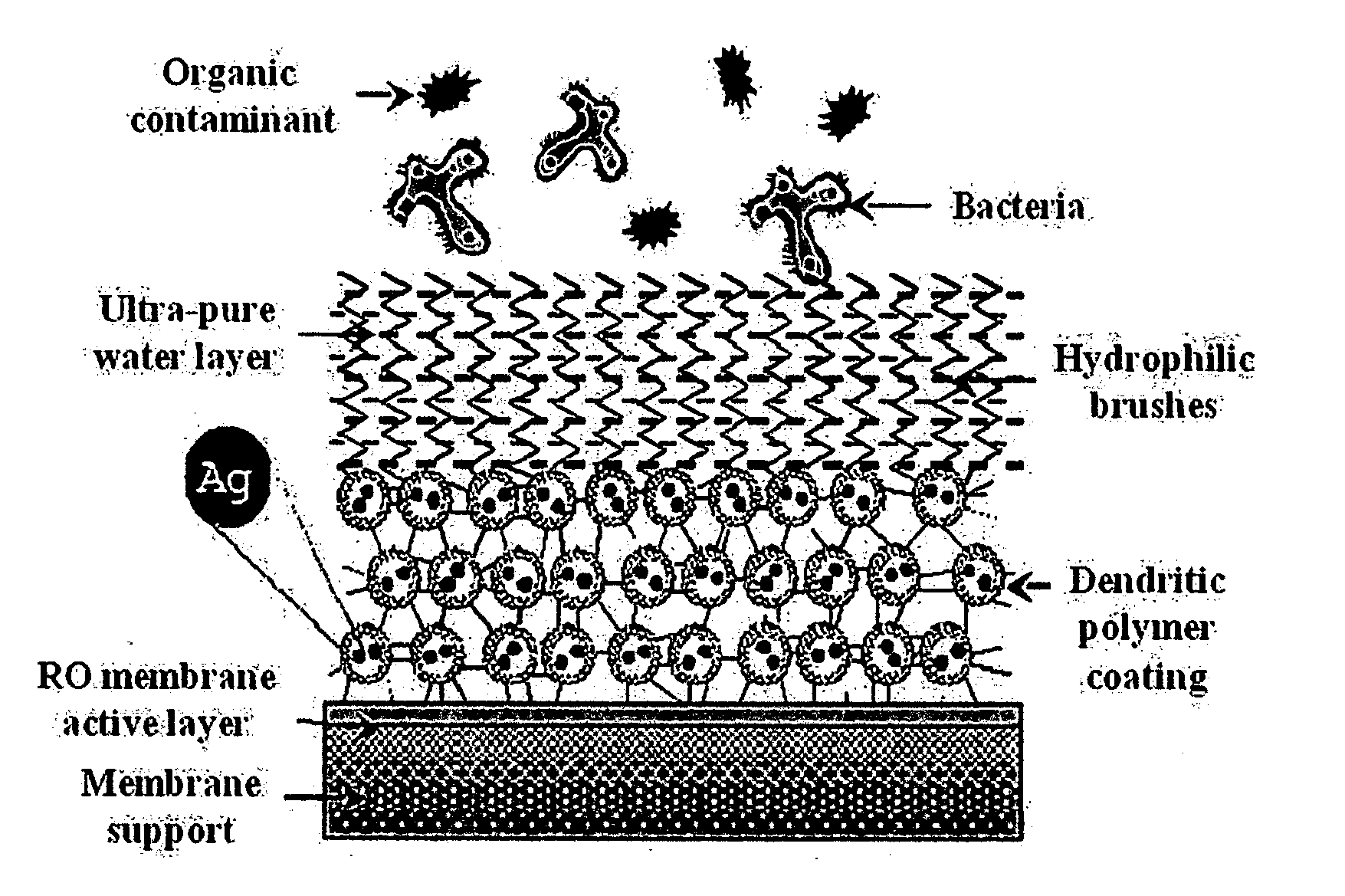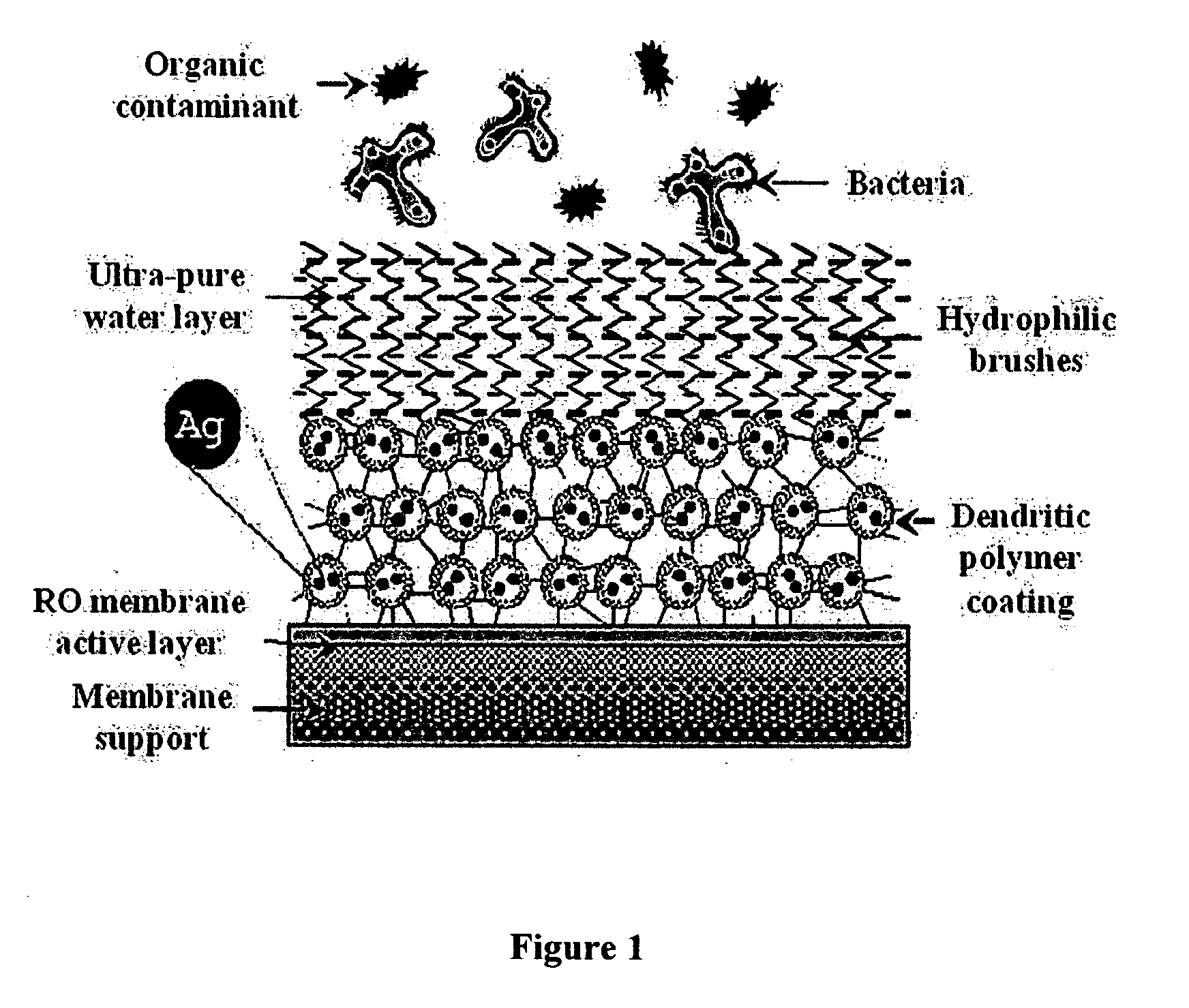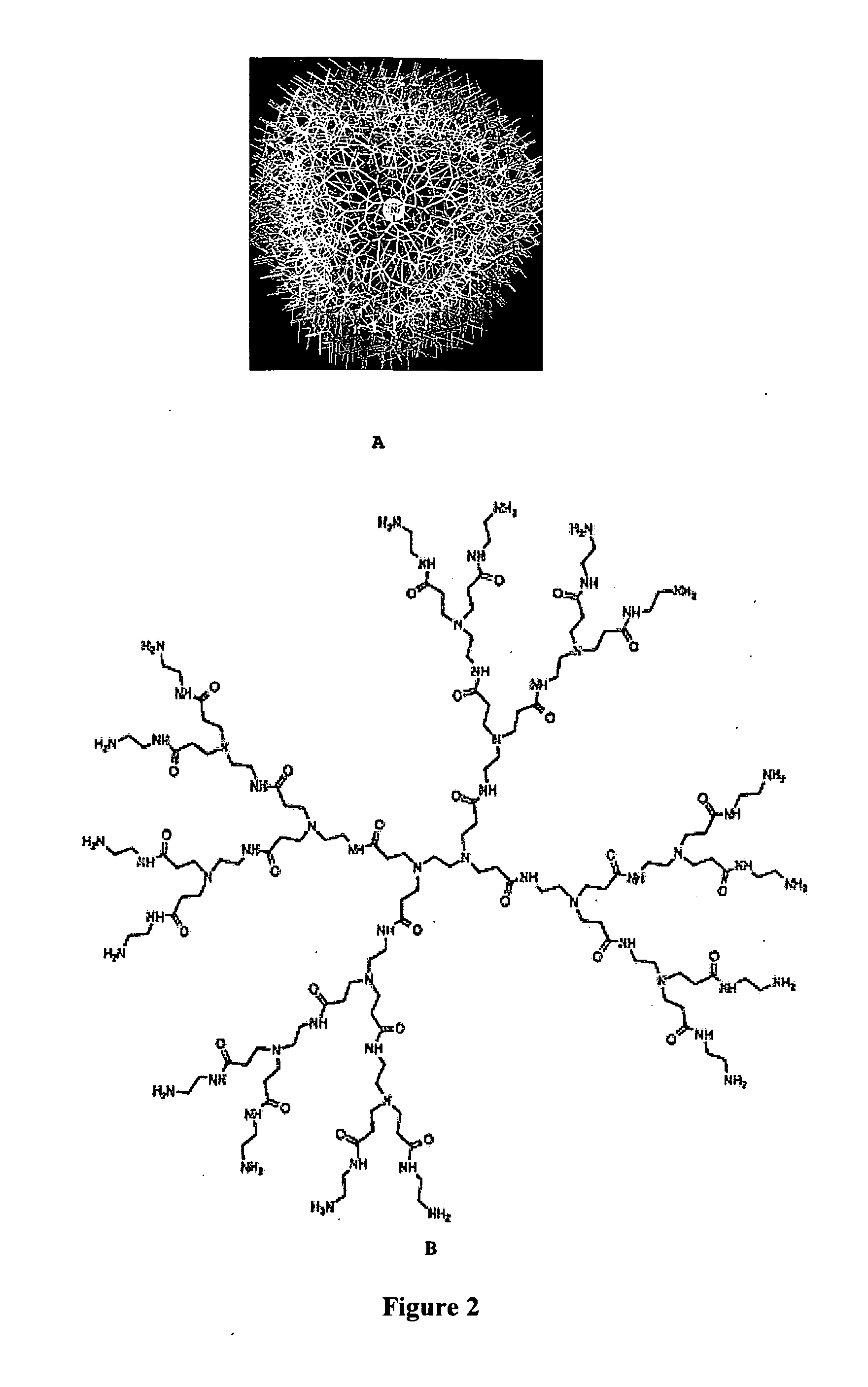Surface Modification of Polyamide Reverse Osmosis Membranes
a reverse osmosis membrane and polyamide technology, applied in the field of dendrimers and hyperbranched polymers, can solve the problems of preventing biofilm formation on the surface, affecting the successful utilization of ro technology, and major obstacles in membrane applications, so as to improve hydrophilicity, prevent biofilm formation, and prevent biofilm formation
- Summary
- Abstract
- Description
- Claims
- Application Information
AI Technical Summary
Benefits of technology
Problems solved by technology
Method used
Image
Examples
examples
Equipment and Methods
Differential Scanning Calorimetry (DSC)
[0086]DSC was run on a DuPont 912 Differential Scanning Calorimeter.
Inductively Coupled Plasma Optical Emission Spectrometry (ICP-OES)
[0087]ICP-OES was used for silver ion analysis.
Infrared Spectra (FTIR)
[0088]Infrared spectra were obtained on a Nicolet 20 DBX FTIR spectrometer either as a neat liquid on polished KBr plates, or if the sample was a solid, as KBr pellets.
MALDI-TOF Mass Spectrometry
[0089]Mass spectra were run on a PerSeptive Biosystems Voyager-STR MALDI-TOF.
Nuclear Magnetic Resonance (NMR)-1H-NMR
[0090]Sample preparation: Samples were dissolved in CDCl3 with tetramethylsilane as the internal reference standard unless otherwise stated.
[0091]Equipment: 1H-NMR spectra were obtained on a Varian 400 MHz NMR spectrometer.
Size Exclusion Chromatography (SEC)
[0092]SEC was run on a Waters size exclusion chromatograph with narrow molecular weight distribution polystyrene standards. Eluents were either toluene or chlorofor...
example a
Preparation of Hyperbranched Polyamide from Tris-(Aminoethyl)Amine and Dimethyl Succinate (HB-Pamsuc)
[0100]A 500 mL 3-neck round-bottomed flask was fitted with an overhead stirrer, a Barret trap and a condenser. TREN (103 g, 0.704 mol) was added to the flask, followed by dimethyl succinate (77.1 g, 0.514 mol). The flask was heated overnight at 110° C. in an oil bath. Upon cooling, the viscous yellow product was dissolved in 100 mL of chloroform and precipitated by addition of diethyl ether (2×750 mL). The ether layer was discarded and all of the volatiles were removed under reduced pressure to yield 152 g (84%) of the title product.
example b
Synthesis of N-hydroxysuccinimide Derivative of Methoxypolyethyleneglycol Acetic Acid (NHS-PEG)
[0101]In a 250 mL round-bottom flask equipped with a nitrogen inlet and outlet, a dropping funnel and a magnetic stir bar, EDC (1.31 g, 6.83 mmol) and N-hydroxysuccinimide (0.780 g, 6.78 mmol) were added and the flask was placed on a magnetic stirrer. Methylene chloride (120 mL) was added to dissolve the reagents in the flask. MPEG (4.09 g, 6.739 mmol) was added to the stirred solution, drop-wise over 6 min. After stirring at RT for 42 hr, the reaction mixture was transferred to a 1-neck flask and the solvent was removed on a rotavap. The residue was dissolved in water and extracted 4 times with chloroform (4×200 mL). The resultant chloroform extract was washed with 500 mL of saturated sodium bicarbonate solution, followed by DI water (2×250 mL). The organic extract was dried over anhydrous sodium sulfate, filtered, and the solvent stripped under reduced pressure on a rotavap to obtain 1.3...
PUM
| Property | Measurement | Unit |
|---|---|---|
| water contact angle | aaaaa | aaaaa |
| water contact angle | aaaaa | aaaaa |
| diameter | aaaaa | aaaaa |
Abstract
Description
Claims
Application Information
 Login to View More
Login to View More - R&D
- Intellectual Property
- Life Sciences
- Materials
- Tech Scout
- Unparalleled Data Quality
- Higher Quality Content
- 60% Fewer Hallucinations
Browse by: Latest US Patents, China's latest patents, Technical Efficacy Thesaurus, Application Domain, Technology Topic, Popular Technical Reports.
© 2025 PatSnap. All rights reserved.Legal|Privacy policy|Modern Slavery Act Transparency Statement|Sitemap|About US| Contact US: help@patsnap.com



